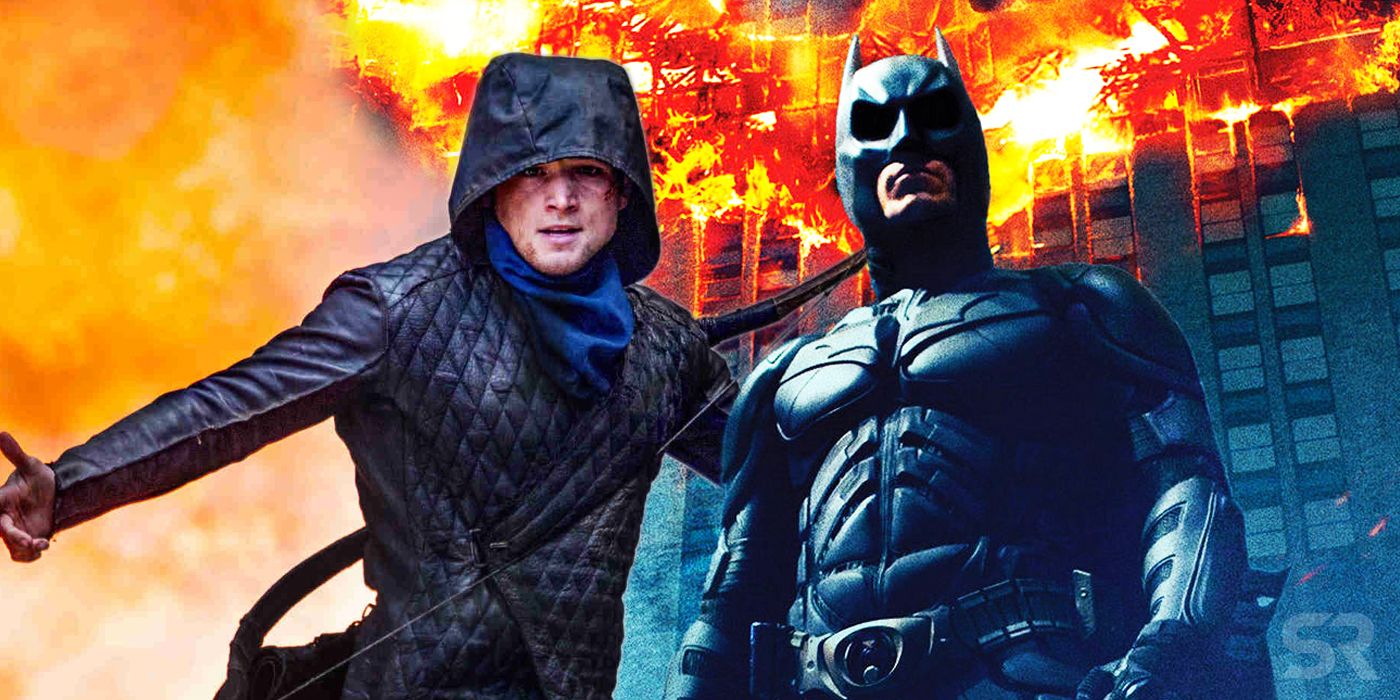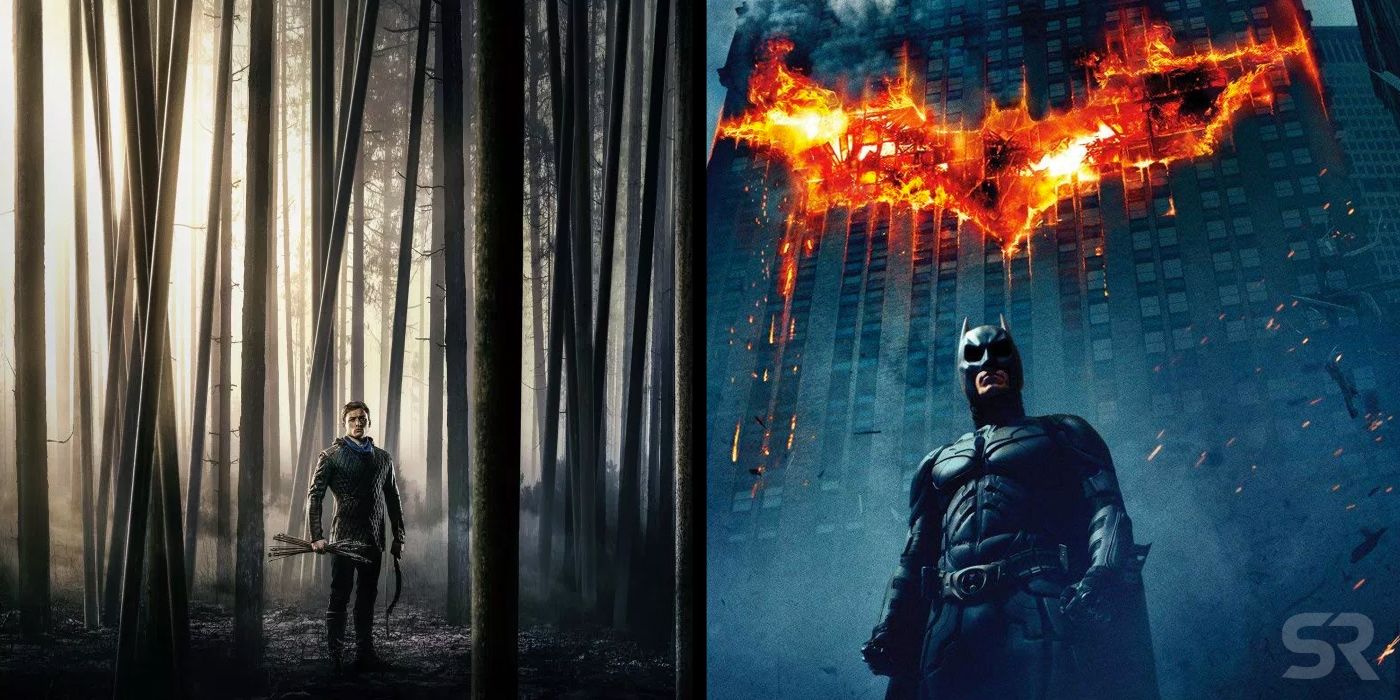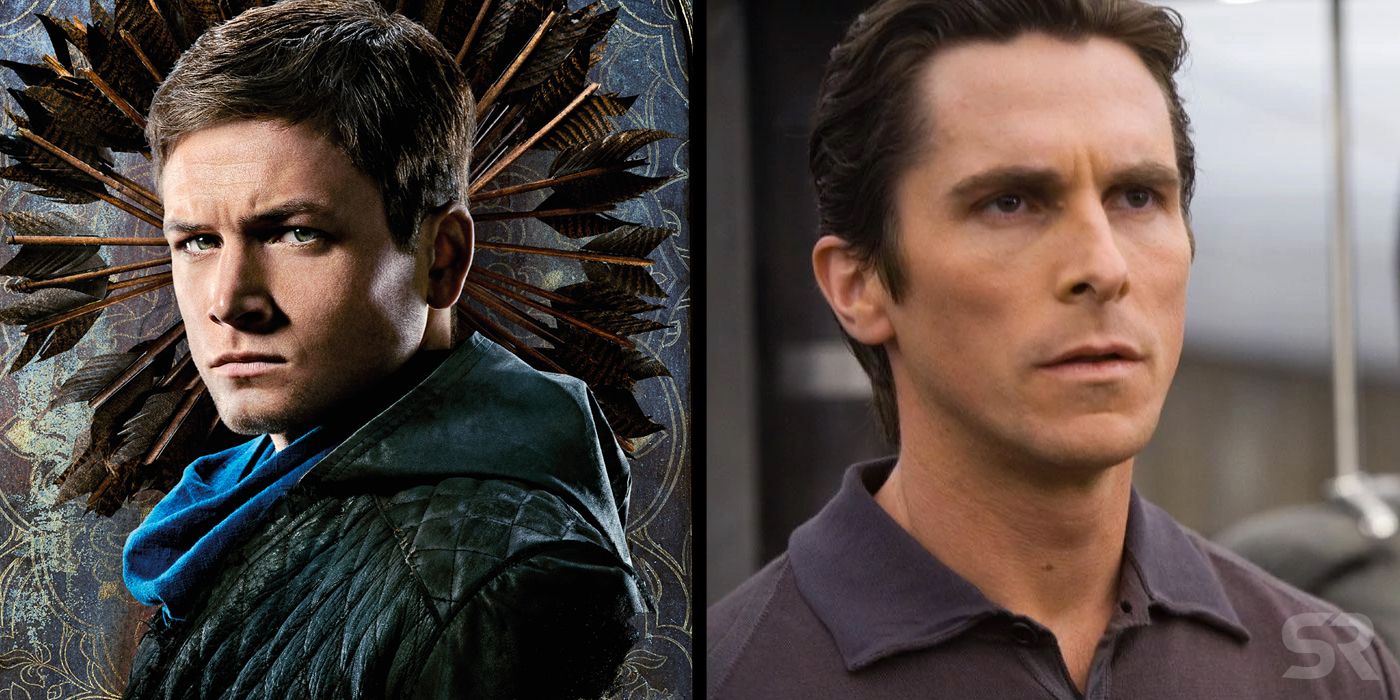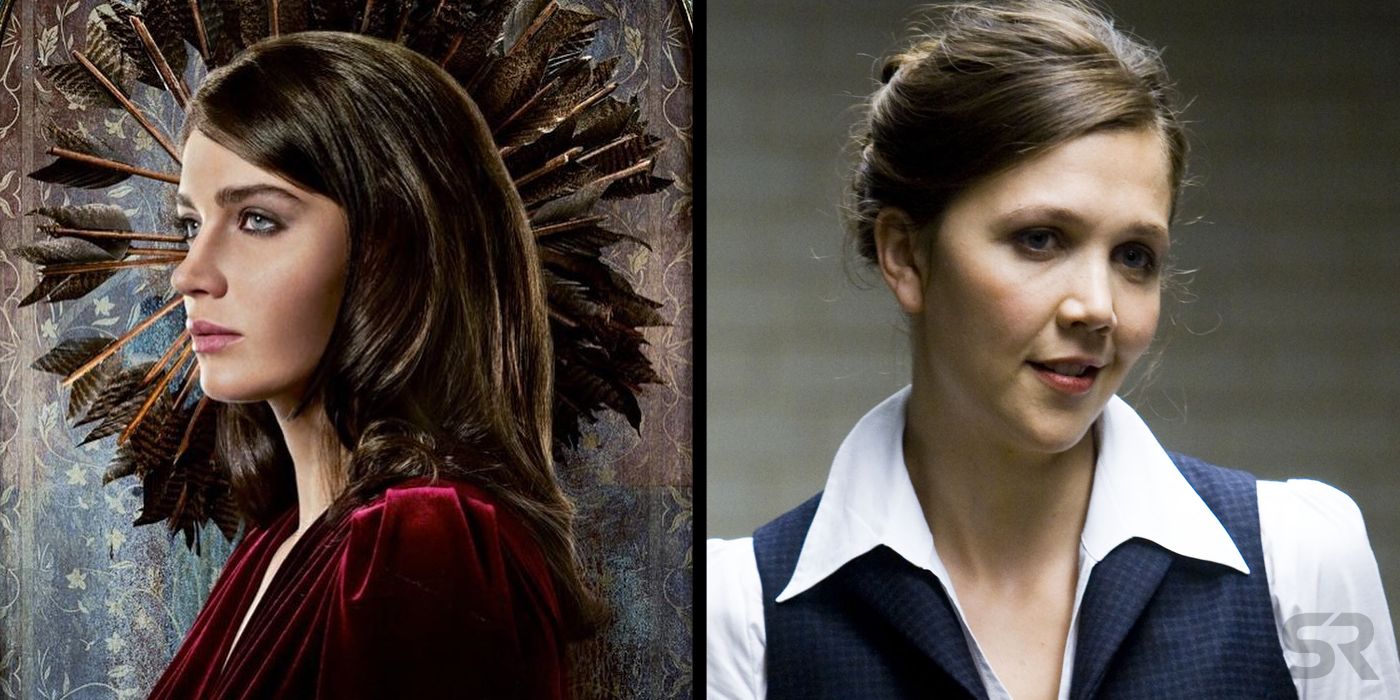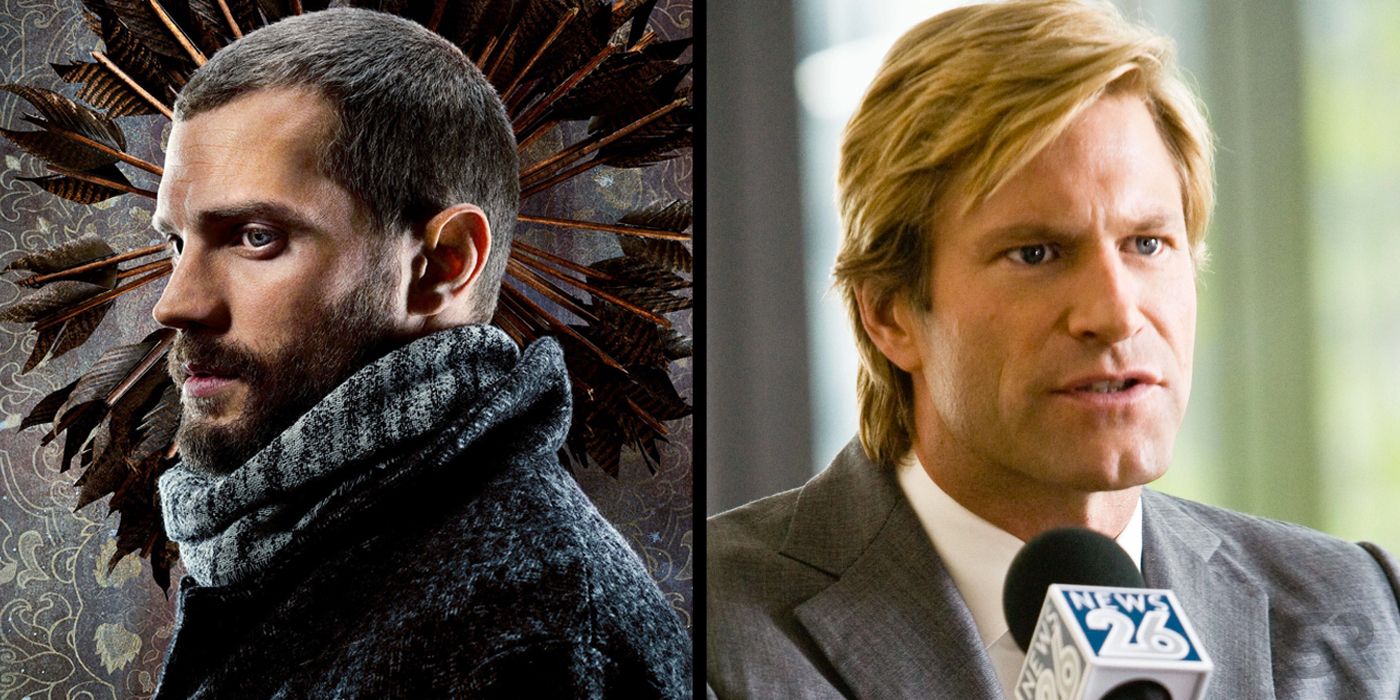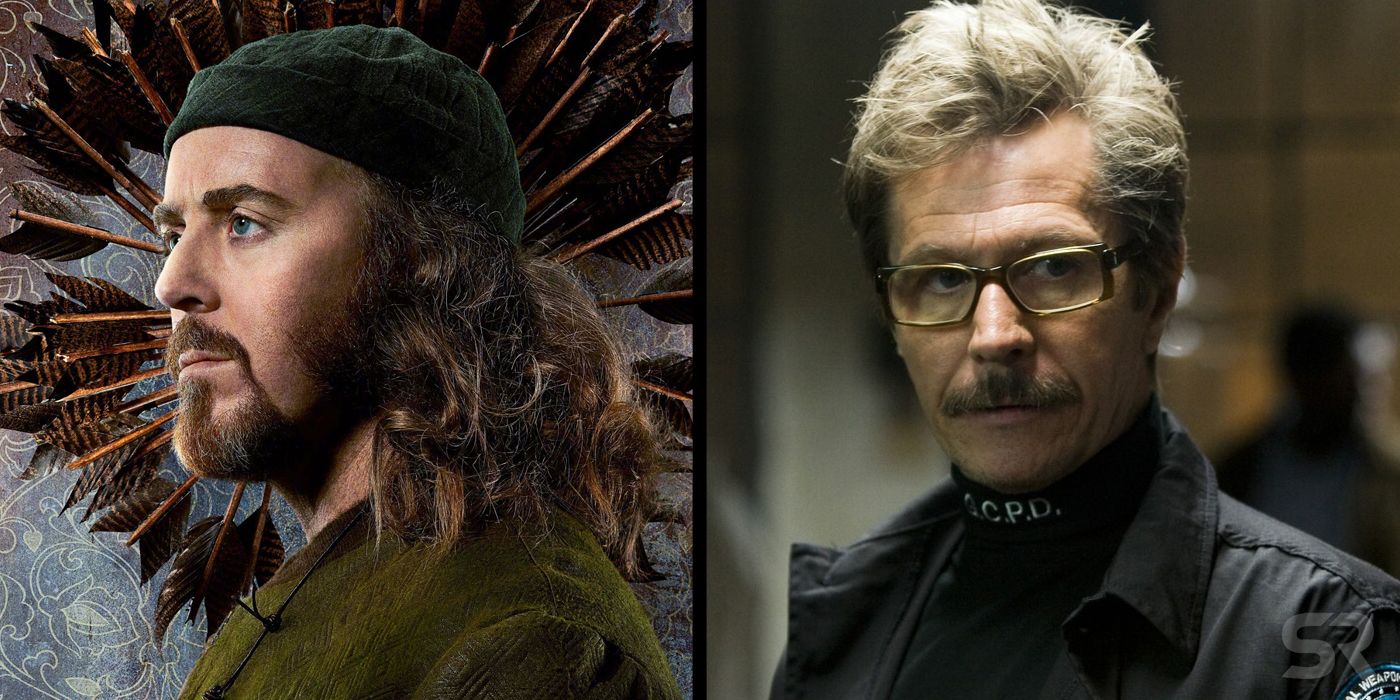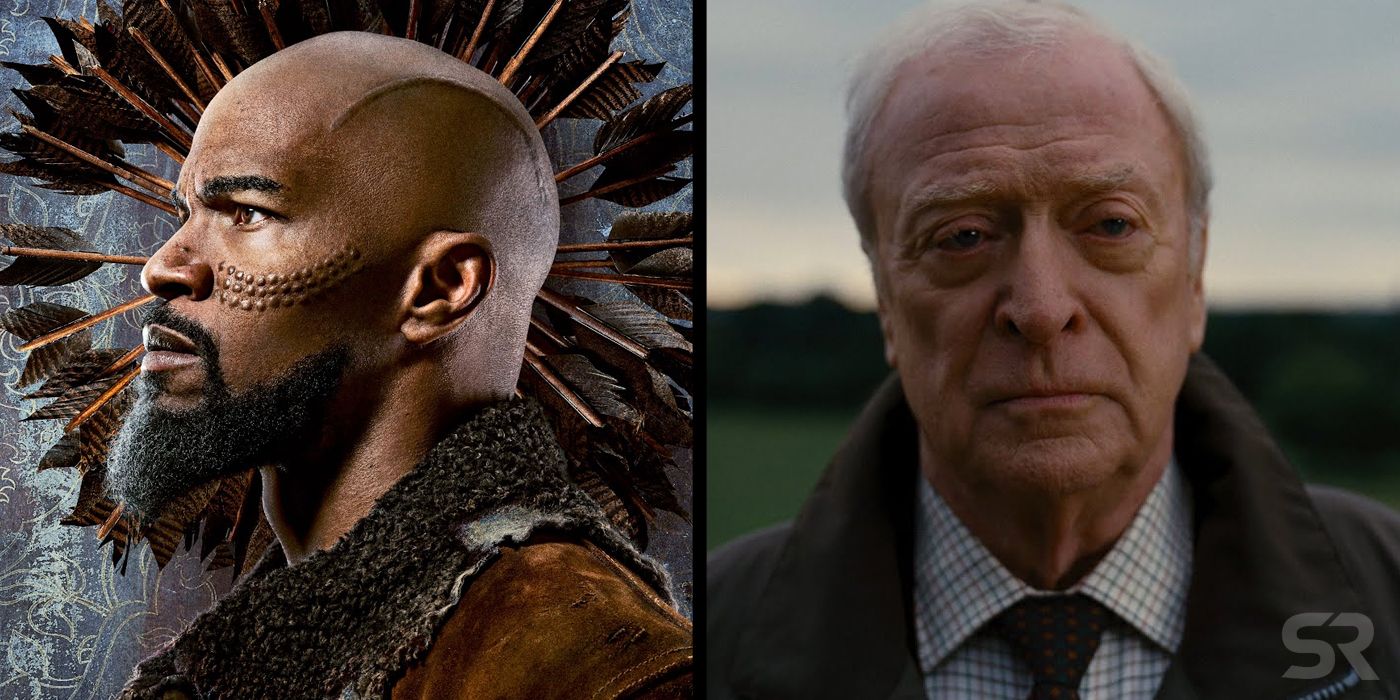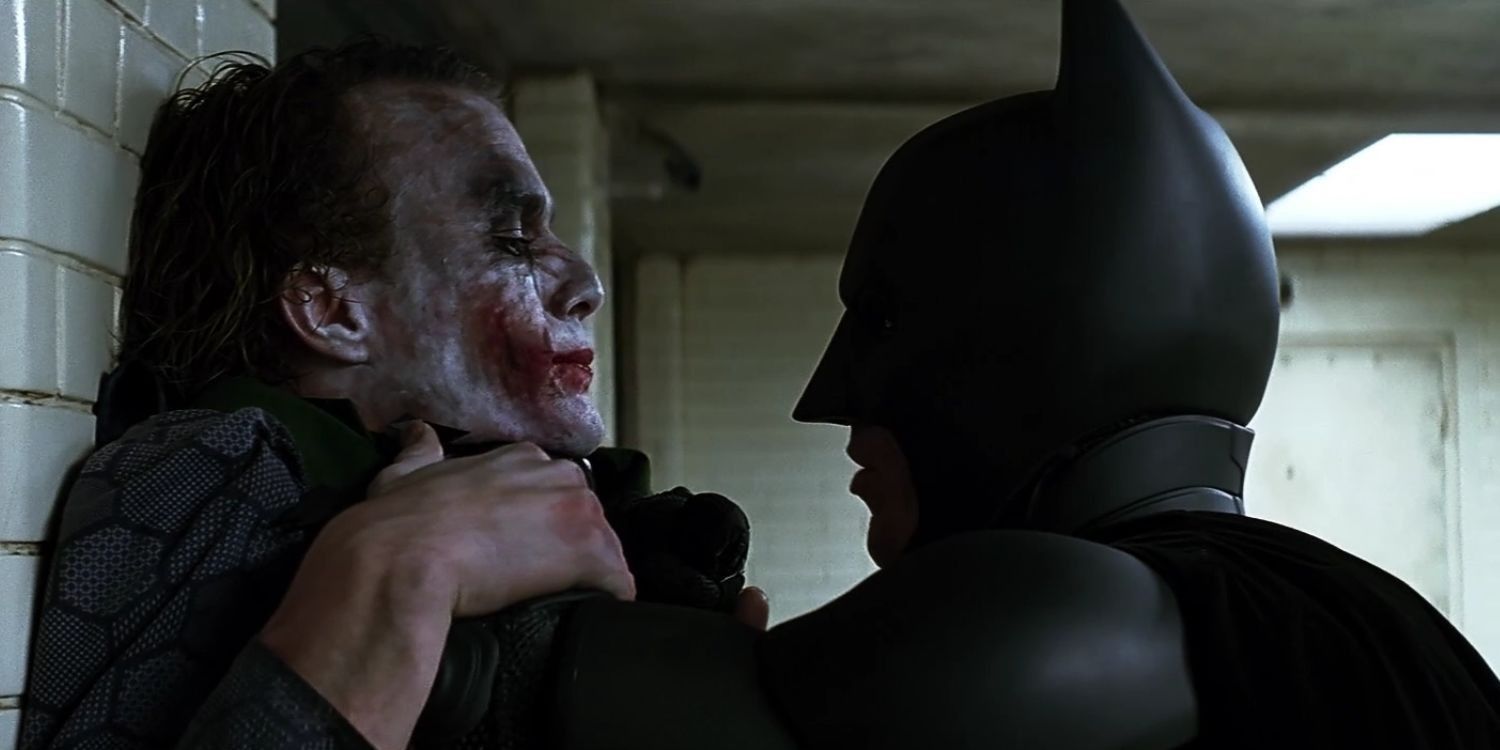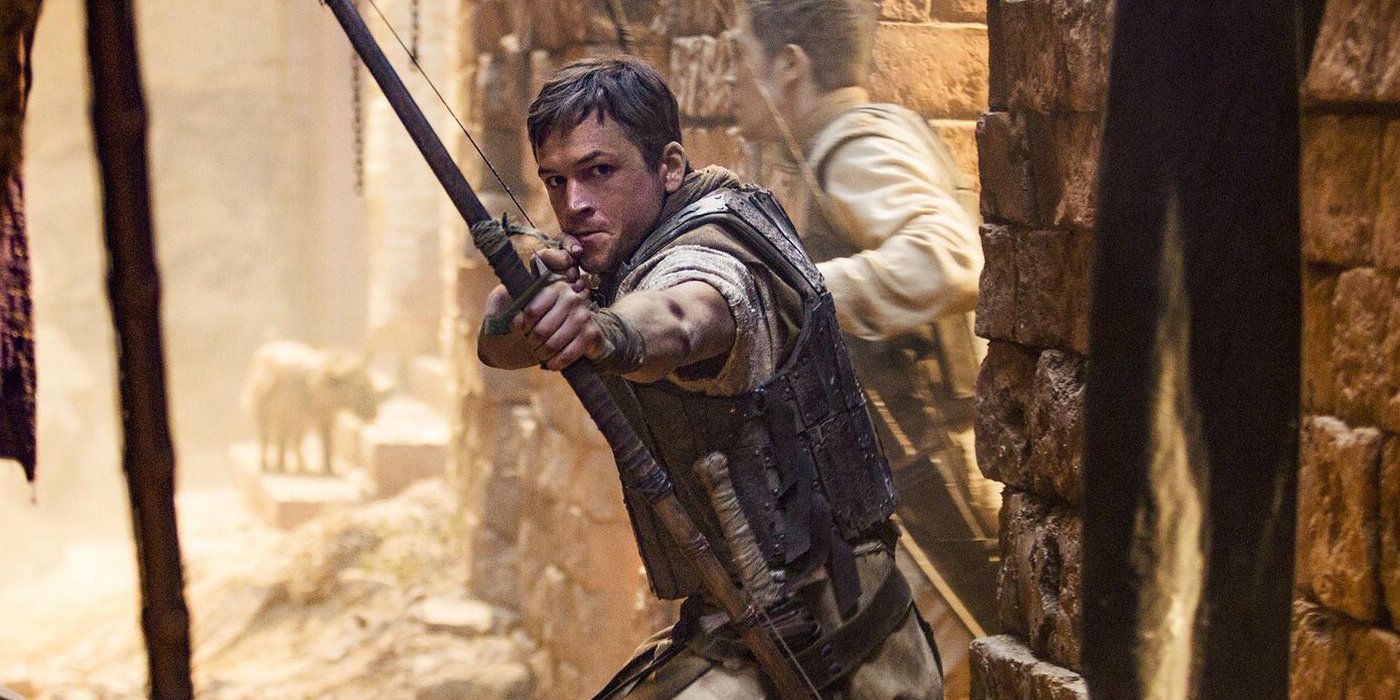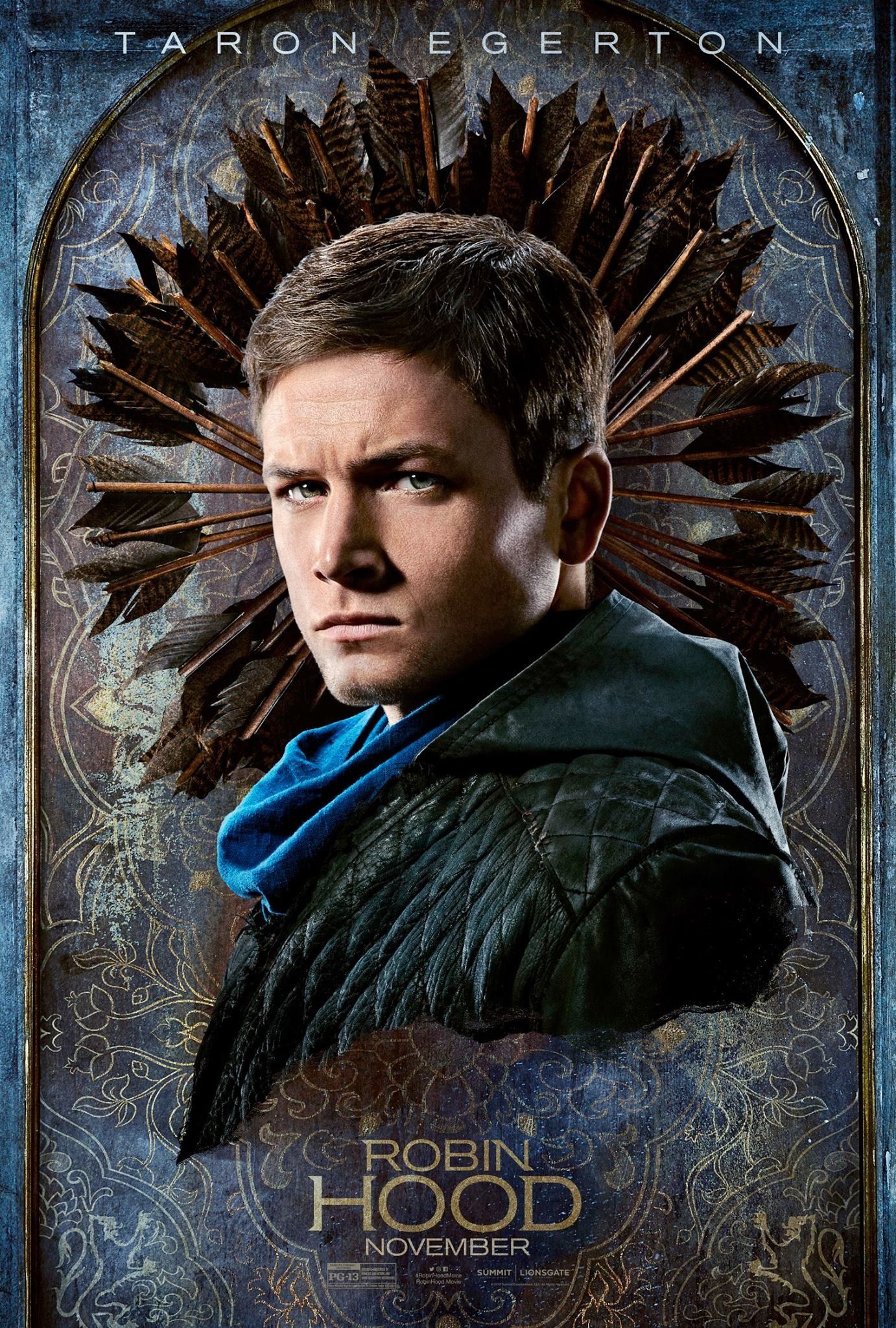WARNING: Spoilers for Robin Hood.
The new Robin Hood movie’s story is remarkably similar to The Dark Knight. Here are the surprisingly deep-running parallels, and why a film about a British folk hero would want to use the template of a dark superhero movie in the first place.
The latest iteration of the Robin Hood story, starring Taron Egerton, Jamie Foxx and Ben Mendelsohn, opened this week to universally negative reviews. Its opening weekend forecast is (according to Box Office Mojo) around $10m, which would put it far behind new releases like Ralph Breaks the Internet and Creed 2, as well as leftovers from the month like Bohemian Rhapsody and Fantastic Beasts: The Crimes of Grindelwald.
Related: Robin Hood 2018's Most Brutal Reviews
Overall, the critical consensus on has struggled to find a reason for yet another re-invention of Robin Hood to exist. This time, the film seems intended to be the starting point for a franchise, although it seems doubtful sequels will follow if the predicted box office numbers hold up. Yet the most fascinating part of Robin Hood is how eerily familiar it feels to one of the most iconic films of the 21st century so far. It doesn’t take a genius to notice how much Nottingham suddenly feels like Gotham City.
- This Page: All The Parallels Between Robin Hood & The Dark Knight
- Page 2: Why Robin Hood Remade The Dark Knight (And Why It Was A Bad Idea)
Robin Hood's Plot is a Remake of The Dark Knight
On a purely plot-based level, the similarities between Batman Begins and The Dark Knight and this version of Robin Hood are startling: Robin Hood is the story of a spoiled rich boy who goes abroad to fight and comes back to discover his hometown has been destroyed by crime and political corruption, headed by a malevolent force. With the help of a skilled expert and token black character, our hero becomes a masked vigilante who inspires the trodden-down masses to have hope once again. Yet his main motivation seems to be winning back the heart of his former love, who has moved on with a charming wannabe politician who opposes the vigilante’s ways because he sees reason and discourse as a more effective route. Once the vigilante wins the day and flees from his home, his former ally has half of his face scarred and becomes a new villainous force.
Not every moment lines up beat-for-beat but in terms of the basic structure and character arcs, it’s pretty surprising how familiar Robin Hood feels to Batman fans. There are points that are so direct that one wonders if Lionsgate can expect a plagiarism suit on their door in the coming weeks. It’s not made any better when these comparisons are dissected with more detail.
Robin Hood is Bruce Wayne/Batman
The new Robin Hood is younger than we’ve previously seen him on screen, most likely because youth makes an origin story easier and the film is hoping to appeal to a millennial audience. Taron Egerton is charming as Robin (or Rob as he is mostly called here), but it’s tough to escape the Bruce Wayne comparisons. While Robin doesn't lose his parents in a tragic robbery gone wrong – we never actually see his family – and his vigilante motivations are not footed in his familial pain, the analogy remains sturdy.
Related: Does Robin Hood (2018) Have An End Credits Scene?
Robin fights in the Crusades but, like Bruce’s time with Ra's al Ghul, he rebels against his commander’s orders to be more ruthless, which leads to him trying to save the son of one of the captured enemy soldiers (who later becomes this film’s Little John, as played by Jamie Foxx). Before he moves onto his vigilante persona, Robin, like Bruce, establishes himself as someone who wants to do the right thing in the face of corruption and greater power.
When Robin returns to Nottingham, four years after leaving and two years after being declared dead by the state, he quickly returns to his mantle as the local rich boy. Encouraged by John to create a persona that will throw the scent of suspicion off him, as well as grant him access to the upper echelons of power he wishes to infiltrate, Robin lives the life of a wealthy playboy who happily kneels to the Sheriff of Nottingham and mocks the masked vigilante everyone is talking about. Robin, and others around him, consistently talk about the vigilante, known as The Hood, as a symbol of hope for the oppressed citizens of Nottingham who have been disenfranchised by a corrupt system. While Bruce prefers to go it alone in his battle, Robin does at least encourage Nottingham’s people to rise up with him, but otherwise, the parallels between the two are near identical at times.
Marian is Rachel Dawes
As played by Eve Hewson (The Knick), Marian is positioned as a voice of reason as well as Robin’s own potential saving grace. The pair met in their youth and quickly formed a passionate relationship, but after returning from the Crusades, Robin discovers she has moved on with another man. Marian (she is never called a Maid in this version) isn’t as politically driven or active as Rachel Dawes, who is positioned as a good voice in the corrupt legal system. Marian isn’t ambitious in her activism and sees it more as a necessity of her position, but it is still very similar to Rachel’s own crusade against Gotham’s gangsters.
Fortunately, Marian is not killed off for plot motivation, although she is still seen mostly as a prize to be won in the way Rachel is, especially in The Dark Knight when a love triangle of sorts forms between her, Bruce and Harvey Dent.
Will Scarlett is Harvey Dent/Two-Face
Jamie Dornan plays Will Scarlett, Marian’s new love and a wannabe political voice for the people. In the traditional Robin Hood ballads, Will is one of Robin’s Merry Men and closest allies. Here, he is an antagonist, first romantically then politically. Now, to be fair, Scarlett’s motivations are less pure than those of Harvey Dent in The Dark Knight. While he does seem to care about the plight of his fellow citizens of Nottingham, he is more interested in making his way to the higher ranks of power. He does this by positioning himself as a voice of reason, more central in intent than The Hood’s vigilantism. And that isn't unlike Harvey Dent, who truly believes the system can be fixed from the inside.
Both Dent and Scarlett seem more embittered by the loss of their loved ones than the politics of the city. Marian does not die by Scarlett sees her kissing Robin and that is enough to distract him from his duty, which leads to half of his face being scarred (the same side of his face scarred as Two-Face in The Dark Knight). Scarlett is set up as the primary antagonist of the next Robin Hood film, having taken on the new mantle of the Sheriff of Nottingham.
Friar Tuck is Detective Gordon
Australian comedian Tim Minchin plays Friar Tuck, who, as he is in most other Robin Hood adaptations, is the story’s comic relief. However, he’s also the only member of the corrupt clergy who still believes in the pure goodness of his message and fights for the people in whatever way he can, on top of becoming an ally to Robin. When nobody else in the church can be trusted, Friar Tuck remains a voice for the people, even as he works alongside the very forces he hates. Jim Gordon’s own battles in Gotham PD as one of the few incorruptible figures in the department makes him an easy ally for Batman, although he’s not there to provide as many jokes as Friar Tuck is.
Little John is Alfred/Lucius Fox
Jamie Foxx’s John serves dual roles as Robin’s mentor and stand-in father figure in their battle to take on the powers of Nottingham, although their first encounter is one of the film’s more unique story points. The pair meet fighting one another in the Crusades, where one of Robin’s then-allies cut off John’s hand. When Robin tries to save the life of John’s son, John sneaks back to England with him and swears allegiance to his former enemy. John is far more of a driving force behind the strategy to take down the Sheriff of Nottingham than Robin, who remains more interested in winning Marian back. However, John still fulfills many of the same roles as Lucius Fox and Alfred, as well as hitting similar plot beats.
John is the one who motivates Robin to do good and, while he doesn’t have the level of technological prowess Lucius possesses, he does provide him with a more modern bow and training far beyond what his time in the Crusades offered. Jamie Foxx has one of the more interesting roles in the film – it wouldn’t be a surprise to discover if the film was originally intended as a star vehicle for him – but the role of the wise older black man who helps the young white boy to fulfill his destiny is also a problematic trope that has its roots in decades of pop culture.
Page 2 of 2: Why Robin Hood Remade The Dark Knight (And Why It Was A Bad Idea)
Why Use The Dark Knight as a Template For Robin Hood?
The influence Christopher Nolan’s Dark Knight trilogy has had on the past decade of filmmaking is immeasurable. Large chunks of the superhero cinema that followed in his footsteps is either directly inspired by those films or lifting imagery straight from them. Nolan was not the first director to take material that is generally considered frivolous and use it for grounded socially realist storytelling but he was the one who made it the new ideal for Hollywood blockbusters.
It makes sense that a film like Robin Hood would want to use the template of Nolan’s trilogy so thoroughly. Indeed, most attempts by studios to replicate the expanded universe or new franchise mold do so by looking at what superhero cinema has done. Guy Ritchie’s King Arthur: Legend of the Sword – a film Robin Hood has been compared to many times in reviews – had similar problems in that its attempt to tell an origin story stuck too close to the conventions of work like Iron Man and Batman Begins. A similar problem befell The Mummy, which was more concerned with setting up a mythology for an expanded universe than telling a singular story.
Related: Hollywood Learned The Right Lessons From The Dark Knight (Eventually)
The Dark Knight is a great storytelling template because of how it mixes familiar elements with the unexpected. Batman fans know that Harvey Dent will become Two-Face but the journey to that point is where the thrills are. And, evidently, the use of social realism to ground the story in a level of political urgency is something that remains fresh even a decade on from The Dark Knight's release. While the film was not an origin story, it still works in many of the same ways that trope does. It's not difficult to see why the film-makers of Robin Hood would want to replicate that; if you’re going to steal, steal from the best. But, of course, it doesn’t always work that way.
Robin Hood Doesn’t Work as a Dark Knight Story
The major problem with Robin Hood trying to be a Batman story is that it’s tonally all wrong for the original source material. This isn’t the first time Hollywood has tried to make Robin Hood gritty or grounded in social realism – Ridley Scott’s film pulls many of the same tricks – but this film’s real-life parallels are so crudely drawn.
It wants to be both a Batman-style origin story and an allegory for modern politics. It's telling that the only major character who doesn’t have a Batman equivalent is the Sheriff of Nottingham; that’s undoubtedly because the film clearly wants the audience to believe he’s a Donald Trump figure. This Sheriff of Nottingham is as hammy as Alan Rickman’s version in Robin Hood: Prince of Thieves (Ben Mendelsohn’s performance seems directly inspired by him), but then the film gives him a tragic back-story that is so unexpectedly bleak, which makes Mendelsohn’s screeching seem utterly inappropriate for the film.
Robin Hood wants its politics grounded in the way The Dark Knight managed but it doesn’t want to commit to the stylistic choices that would require. Visually, Robin Hood is more like a Guy Ritchie rip-off than anything Nolan has ever done. That would be a better viewing experience if the action matched the tone, but Robin Hood is trying too hard to be serious for it to work. The Dark Knight is utterly committed to its aesthetic but Robin Hood wants it both ways: it wants the seriousness of Nolan, the visuals of Ritchie and the anachronistic qualities of A Knight’s Tale (most evident in the costumes but seen nowhere else in the film).
Robin Hood knows what it wants to be but by trying so hard to replicate another much better and more iconic film, it ultimately has no identity of its own. The end result is a messy film that reminds you of more interesting things you could be watching instead. Whether Hollywood learns its lesson from this film remains to be seen, but in order to create a viable franchise, one must do more than steal from The Dark Knight.

